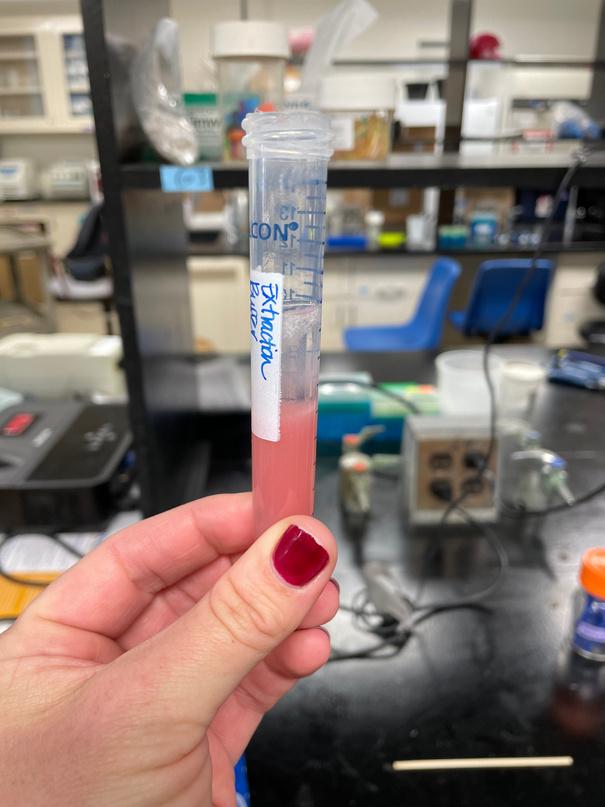




2ndFloorWi-Fi
3rdFloorWi-Fi








Dear Summit Participants,
Welcome to the Greater Hazelwood Kaleidoscope Summit— a gathering that promises to illuminate how the field of life sciences can positively impact the Greater Hazelwood community. I’m delighted that you’re here!
As we discover today’s kaleidoscope of possibilities, I encourage us to let curiosity be our compass and kindness our guiding star. Together, let us embrace the spirit of collaboration, drawing on our diverse backgrounds and experiences as the fertile soil from which groundbreaking ideas blossom.
Your presence here today is invaluable, and I am grateful for your time and participation. Thank you for being catalysts of change, advocates for progress, and champions with the Greater Hazelwood community.
May our time together be marked by inspiration, partnership, and the shared belief that, indeed, the best is yet to come.
With gratitude and excitement,
Heidi Ward Director of Planning

Greater Hazelwood will be at the center of Pittsburgh’s next major transformation, with Hazelwood Green at the forefront of Pittsburgh’s growth as a regional hub for robotics, advanced manufacturing, and, specific to the University of Pittsburgh, the life sciences industries.
Pitt will have a life sciences research, development, and manufacturing facility located on Hazelwood Green, called BioForge. With the biomanufacturing facility serving as a catalyst to deepen our neighborhood commitment, The Heinz Endowments has generously supported the goal of ensuring that the field of life sciences positively impacts the Greater Hazelwood community.
To pursue this goal, our planning team was intentionally designed to have representation from the community to ensure we are hearing community voices all throughout this project as we explore what will have the greatest impact. We value partnerships that build stronger communities and a stronger University. We are grateful for the many meaningful conversations we have had along the way.
We are excited to share what we have learned and are eager to continue to build partnerships that bring together infinite perspectives for one community vision.



Life sciences study living things like plants, animals, and bacteria, helping us understand how the natural world works, how our bodies function, keys to good health, and much more. They also explore life processes like growth, movement, and breathing.


As scientists learn more, relevant discoveries have been made such as cell and gene therapies, which hold incredible promise for treating a wide range of diseases. For example, using gene therapy to treat some forms of blindness and cell therapy to treat various cancers.

‘Seniors Going Strong’ event hosted by Jada House International

Activity: Strawberry DNA Extraction led by Pitt Bio Outreach
Photos by Melanie Wieland

Lina Dostilio, EdD
Vice Chancellor, Engagement & Community Affairs
University of Pittsburgh

Sierra Mason, MID Project Manager
Heidi Ward, MBA Director of Planning University of Pittsburgh
University of Pittsburgh

Keith Caldwell, EdD Executive Director, Placed-Based Initiatives


Greg Kienzl, PhD
University of Pittsburgh

Director of Data & Impact Measurement
University of Pittsburgh
Deborah Gallagher Director, Early Head Start/COTRAIC Education

Danielle Chaykowsky
Director of Programs, Center of Life Education

Dr. Cassie Quigley
Department Chair, School of Education, Pitt Education
Dr. Danielle Davis
President, Davis Consulting Solutions Workforce Development

Dr. Debra Killmeyer
Post Secondary Education Workforce Development



Kinsey Casey
ce Chancellor, Economic Development, Pitt Workforce Development

Sonya Tilghman
Executive Director, Hazelwood Initiative Community Development
Abigail Horn
Public Service Leader, Housing & Community Services Community Development

Trupti Sarode
Director of Strategic SPIA, Pitt Community Develop

Ensure that Greater Hazelwood households have access to a variety of life sciences educational resources through collaborative partnerships with schools and community organizations. According to the 2020 Census, 4,548 residents live in Greater Hazelwood.
Potential Educational Resources: BioForge site visits, industry talks, lunch and learn series, Biotechnology 101 kits, weekend field studies
Early Childhood Education
Elementary School
Middle School
High School
Lifelong Learners
Intergenerational

GHNP Priorities:
Partnerships should include both public and private schools, along with community organizations, to ensure accessible resources for youth programming during and after school hours, as well as for continued education
Identify challenges that may bar residents from accessing training to engage with partners who provide services to overcome barriers (C.1.1). Intentionally activate new spaces in Hazelwood Green with community- and family-friendly programming (C.4.2).
Increase engagement with high school students (grades 9-12) by creating Biotechnology curriculum and classroom resources, developing awareness and appreciation for the life sciences while promoting an understanding of associated career pathways.
Biotechnology is a tool that uses biology to make new products. Bio is short for biology, the study of all living things. Technology is another word for tools.
The PA Department of Education set new academic standards for Science, Technology & Engineering, Environmental Literacy and Sustainability “STEELS” must be fully integrated into instruction by the 2025-26 school year.
GHNP Priorities:
For example: consider substituting an existing biology unit with a dedicated module introducing biotechnology, featuring hands-on laboratory experiments.
Address barriers to further education / training and employment (community) Equitably reduce poverty in the neighborhood (C.8.8).

BSHORT TERM 0-3 YEARS
Designed for individuals aged 18-24, this new life sciences job readiness program aims to increase accessibility to life science careers. Navigation support would be provided, including a dedicated recruiter who would connect participants to the readiness program or identify more suitable training and employment avenues. The recruiter should prioritize residents.
Consider expanding the program to unemployed or underemployed individuals.
For example, a neutral training program that provides specialized education, focused on industry-specific competencies such as fundamental biotechnology techniques, laboratory methods, career development, soft skills, and more
For the State of Pennslyvania: We project that the total demand in life science and life science sub-sectors to be ~44,000 for the 2020 to 2030 period, with an annual demand from job growth of ~2,400 (12,000 over the next 5 yrs; 24,000 over the next 10 yrs)
PA Department of Labor Long-Term Occupational Employment Projections

HNP Priorities:
Identify and create partnerships with programs offering training for well-paying jobs in growth industries that do not require a Bachelor’s degree (C.3.4). Connect with local and regional employers to better understand job field projections and tailor workforce programs accordingly (C 3 7)
Professional development for preservice and inservice middle and high school science teachers and guidance counselors.
Potential Trainings: Continuing education, teacher fellowships, summer bootcamps
“Preservice” - an individual who is enrolled in a teacher education program For example a college student who is pursuing a teacher certification
“Inservice” - an individual who is already employed as a teacher
GHNP Priorities:
Guidance counselors are included to help students plan for life after high school, whether they plan to attend college, technical school, or enter the workforce
Address barriers to further education / training and employment (community Create a neighborhood training and employment forum / hub (C.3.2).

ALONGTERM 5-10+ YEARS
Assess and enhance Greater Hazelwood homes, conducting evaluations such as air quality, ventilation, lead/mold exposure, and more. Implement measures aimed at fostering healthier homes, which in turn support resident health and aging-in-place.
Consider setting a goal, such as improving 10% of dwellings across Greater Hazelwood.
Greater Hazelwood Real Estate
Owner Occupied: 873 dwellings
Renter Occupied: 1,093 dwellings
Vacant Housing: 498 units
5-Year Estimates
American Census Survey 2022

NP Priorities:
Improvements such as:
HVAC systems, Air filters, Air purifiers, Mold remediation, Weatherization, Water Heaters, Water Filters, etc
Prevent displacement through innovative, affordable, and targeted housing (development).
Organize community support teams that focus on public health and safety (C.2.5).
Improve pedestrian infrastructure for seamless connectivity and wayfinding across Greater Hazelwood. Integrate history, activities, and technology with trail-side digital tools such as info bulletins, air quality data, healthy living, and WiFi hotspots.
“The Hazelwood Play Trail is a pathway of playful elements that connects to regional bike and walking trails, and raises awareness of the benefits and many different forms of play” - from the 2017 report by Studio for Spatial Practice for Playful Pittsburgh Collaborative.
GHNP Priorities:
The Shapiro Administration recently announced grant opportunities to make communities more pedestrian-friendly.
Friends of the Riverfront are extending the Three Rivers Heritage Trail from the Hazelwood Green development to the Carrie Furnace redevelopment site.
Explore potential for way-finding amenities (C.4.9).
Create a healthy Hazelwood walking route with fitness stations that kn together the hilly and flat parts of the neighborhood (C.6.4).

Target neighborhood gateways for beautification and storytelling efforts (D.11.1).
BMEDTERM 3-5 YEARS
A0-3 YEARS
Resourcesthatbuildourunderstandingoftheimportanceandimpactof lifesciencesinourdailylivesandcreateengagementopportunitiesforall.
Priorityareasshouldconsider:family-sustainingjobsandeconomicgrowthinnearby communities,opportunitiesforeducation,training,upskilling,andlifelonglearning,and increasedawarenessabouthealthyenvironmentsandresidentwell-being.
Creativeopportunities:Comicbook,poster,documentary,artmural,interactiveexhibit
A public awareness campaign is any time-bound, strategic campaign aimed primarily at increasing public visibility and awareness for a cause.

HNP Priorities:
The Department of Community and Economic Development and Governor Shapiro recently launched the first statewide economic development strategy in decades. Life sciences is 1 of 5 key sectors.
Create a neighborhood public awareness campaign around health concerns such as addiction, asthma, diabetes, depression, and anxiety (C.2.2).
Utilize public art as a method of integrating neighborhood culture and history into new development (C 4 5)
Use a mobile unit to provide accessible workforce resources and educational materials directly to the community, where people live.
Programming could include interactive 21st-century job exploration in robotics, manufacturing, and life sciences, hands-on activities with lesson plans that support existing programming for out-of-school time, and support for new and small businesses such as resource navigation, referral services, and financial literacy.
A mobile unit is a vehicle with the basic equipment or materials for a particular purpose For example, the Giant Eagle Mobile Market, the Book Mobile, or the Mobile Fab Lab
21st-century jobs focus on technical knowledge and competencies.
GHNP Priorities:
As an example, a community organization or employer sponsors the mobile unit monthly, offering both an instructor and a tailored curriculum
Promote and support local entrepreneurship (C.3.1).
Create a neighborhood training and employment forum / hub (C.3. Support existing training programs in the neighborhood (C.3.3).



Thank you to The Heinz Endowments for their generous support of this project.

Greater Hazelwood is an amazing community and we are honored and grateful for each of you who call this place home. Whether we have connected at a community event, during a project interview, or elsewhere, we thank you for the positive contributions you have had on this project and the broader Greater Hazelwood community.
Thank you to our partners that are supporting this event!














Heidi Ward, Director of Planning
412-624-6311 |
haw221@pitt.edu
Sierra Mason, Project Manager
412-383-0576 |
snm78@pitt.edu
Pitt’s Office of Engagement and Community Affairs leads Pitt’s Neighborhood Commitments, an initiative that combines community agendas and wisdom with University assets and resources. Pitt’s Neighborhood Commitments are represented by a physical Community Engagement Center (CEC) that creates space for neighborhood partners, community-based organizations, and University students and faculty to collaborate and make big things happen, together.
Learn more about Pitt’s Greater Hazelwood Neighborhood Commitment by scanning the QR code or by visiting:
www.community.pitt.edu/hazelwood

/PittGreaterHazelwood

@Pitt GreaterHazelwood


Over the past year, we have enjoyed more than 130 unique interactions. Here’s a glimpse of some of the fun we’ve had!


























www.community.pitt.edu/hazelwood

